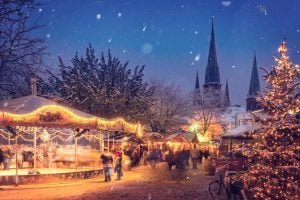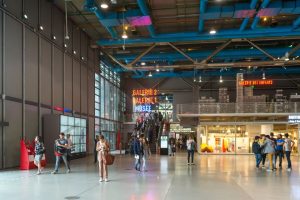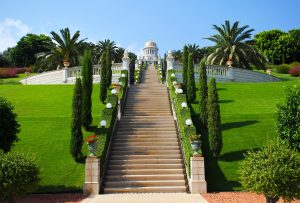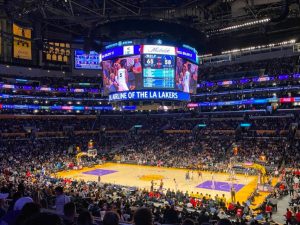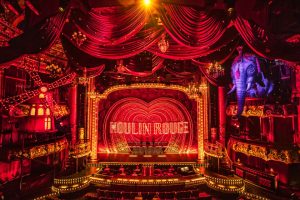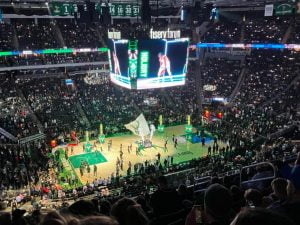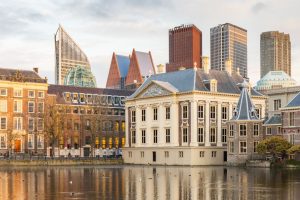The Loire Valley in France - a guide for travelers
In the heart of France, a short drive from Paris, lies Le Val de Loire, the Loire Valley, a magical and beautiful region known as the 'Garden of France'. A journey through the picturesque landscapes of the valley will take you between lush vineyards, orchards, fields, ancient towns and spectacular castles (chateaus) that picturesquely dot the horizon. The Loire Valley is a symphony of history, culture and pleasures just waiting to make you fall in love.
Declared a UNESCO World Heritage Site, this region is a testament to the evolution of the Renaissance and the Age of Enlightenment, as seen in its majestic castles and fortresses. However, it is not only history that beckons visitors to the Loire, as the Green Valley is also considered a haven for wine connoisseurs, offering a tasting of some of the wines The best in the world.
So let's embark on a journey through the magic of the Val de Loire, through the region's best-kept secrets alongside its most famous wonders. Whether you are passionate historians, avid wine lovers, or anyone who wants to fall in love and discover the true spirit of France within a stone's throw of the city of Paris.
Day tours to the Loire Valley from Paris:
Entrance tickets to the castles of the Loire Valley:
Winery tours in the Loire Valley:
The Loire Valley - a brief background
The Loire Valley is a geographical area in France that stretches over 280 kilometers, and it is called the 'Garden of France', and rightly so. Steeped in history and full of green landscapes, the conquering region stands as a timeline that symbolizes the evolution of France, from the Middle Ages through the glorious Renaissance period.
A historical tapestry
Before the region became synonymous with magnificent castles and vineyards, the Loire Valley was a strategic outpost, with the region's early history filled with tales of battles and conquests. The early settlers in the area were the Celts, and traces of their culture remain to this day. During the Middle Ages, the famous fortified castles began to be built in the area, built to protect the area from invaders.
The Renaissance period in France brought with it a new and revolutionary spirit to the Loire Valley, when the massive fortresses from the Middle Ages were converted into magnificent castles, which expressed the peak of the architectural brilliance of the French Renaissance. The area became a favorite among French royalty and nobility, with many rulers building their residences here. Famous figures such as King Francis I and Leonardo da Vinci, who spent the last years of his life in the valley, left a deep mark on the landscape and culture of the Loire.
The history of French wine culture
Along with its historical significance, the Loire Valley plays a central role in shaping France's wine scene. The unique climate in the area, combined with the fertile lands fed by the Loire River that flows along the valley, made the area an excellent location for growing vines. The Loire Valley is home to some of the country's most famous wines - from the fine Sancerre to the lively Carmen de Loire. Today, the countless vineyards that dot the green expanses of the valley stand as a testimony to the region's rich history, beckoning to wine lovers from around the world who come to explore France's magnificent wine scene.
A meeting of art, literature and culture
The tranquility of the Loire Valley enchanted not only kings and winemakers, because over the centuries, the region has inspired countless artists, poets and writers. The stunning landscapes, intertwined rivers and historic buildings have served as a muse for many, giving birth to countless works of art, stories and folklore.
In essence, the Loire Valley is not just a destination, but a narrative, interwoven with stories of kings and queens, battles and peace, art and architecture, and of course, wine. The lure of the Loire lies not only in its picturesque beauty but also in its ability to make its visitors go on a journey through time through the episodes that shaped France as a whole.
When to visit the Loire Valley?
The Loire Valley offers unique experiences throughout the year, and you can find crowds of tourists in every season. Each period of the year brings with it a unique scenery to the view of the valley, with the busiest periods of the year naturally coming in the summer months, especially July and August. Regardless of the season, the Loire Valley promises an experience steeped in history, culture and natural beauty.
Spring months (April to June)
Weather: relatively comfortable temperatures with rains from time to time. The area begins to come alive with flowers and views of greenery. The average temperature varies between 10 degrees in April and 17 degrees in June.
Highlights: The gardens of many castles are in full bloom and create a picturesque setting. Spring is also an excellent time for bird watching, and this period also marks the beginning of the tourist season, so almost all attractions and sites will be open, and will be less crowded than during the summer.
Summer months (July August)
Weather: hot weather with temperatures reaching 25 degrees and even more. Much of the days will be sunny but expect rain to come from time to time.
Highlights: This period is considered the peak of the tourist season, and most attractions, sites and tours operate from early morning until evening. Many festivals and cultural events take place in the area, and the area is vibrant and flourishing. It should be taken into account that the sites may be busy, and during this period it is recommended to book in advance the place to stay and the various attractions.
Autumn period (September to November)
Weather: cool weather that heralds the arrival of autumn, average temperatures range from 20 degrees in September to 10 degrees in November. This period turns the area into a palette of orange, yellow and red, with the fall period considered one of the most beautiful periods in the picturesque valley.
Highlights: This period is grape harvest season, making it the perfect time for wine lovers. The cool weather makes these months ideal for various activities such as cycling trips and hiking trails, which are sometimes difficult to do in the hot summer months. The tourist sites are less crowded, but the cool weather must be taken into account.
Winter period (December to March)
Weather: Cold weather with temperatures ranging on average between 3 and 8 degrees. Snow is a rare thing in the valley but it happens every few years. The area in the winter months is considered rainy.
Highlights: The winter months envelop the valley in a magical cold atmosphere, one that is wrapped in a unique charm. The castles become more dramatic, and the Christmas season brings with it colorful and vibrant markets offering local art, delightful mulled wines and a wonderful culinary scene. You can find such markets in many cities and towns, including Tours and Saumor. It should be taken into account that during this period, certain sites and attractions may reduce operating hours or be closed, and it is important to prepare in advance. It is also mandatory to have warm clothing.
Where is it located and how to get there
The Loire Valley is located in central France, along the Loire River. The area extends from the Atlantic coast near the city of Nantes in the west to the areas around Sully-sur-Loire in the east. Getting to the Loire Valley is relatively simple, thanks to its central location and France's excellent transportation network.
The most convenient and popular way to get to the Loire Valley is of course from Paris, and while in the Loire Valley you will find an airport called Tours Val de Loire Airport, located in the city of Tours, the airport is served by intra-European flights and there are no direct flights from Israel. Besides the airports of Paris, you can also land at the airport of the city of Nantes - Nantes Atlantique Airport, which is a short distance from the Loire region.
From Paris or Nantes, as well as many other cities in France, you will find TGV train (high speed train), which connects the major cities of the Loire Valley - Tours, Orléans and Blois, with the major cities of France. The distance to these cities from Paris, for example, is only about an hour. These train journeys offer a comfortable and panoramic route full of picturesque villages and green spaces.
The most convenient way to explore the Loire Valley is of course by car, not a long drive, depending on the destinations you choose to visit in the valley. The driving distance from Paris to the city of Tours, for example, is about two and a half hours.
Also, for those looking for a more budget-friendly option, You will find long distance buses serving the area, with companies like FlixBus and Eurolines offering a variety of routes that pass through the valley.
Those who would like to go on an experience of one day or more from the city of Paris, will be able to find countless companies that offer organized trips to the Loire Valley, some focus on touring the valley's magnificent castles, some focus on the wine scene, and some combine history, nature and wine. The tours depart all year round and offer a comfortable and organized experience.
Getting around in the Loire Valley
Navigating the Loire Valley is undoubtedly a delightful experience, with picturesque views that unfold wherever you travel through.
The most comfortable and convenient way to explore the area is of course by car, which will allow you flexibility and give you the opportunity to visit remote castles and vineyards as well. The valley roads are well maintained and easy to navigate. It is recommended to rent a car in the city of Paris or Nantes, but it is also possible to rent a car in the city of Tours.
Public transportation - in the area you will find regional trains called TER, these connect many towns in the valley, and allow you to visit them even without a car. In addition, various bus lines operate within the area, these connect smaller towns and villages.
Loire valley- Between magnificent castles and vibrant vineyards
And now that we've gotten to know the picturesque area and learned when to visit and how to get there, let's dive into what the vibrant valley offers to its visitors:
The magnificent castles of the Loire Valley
Going on a journey through the Loire Valley is just like entering the pages of a living fairy tale, full of majestic castles, green landscapes and meandering rivers. Visiting the Loire Valley without visiting at least one of the magnificent castles is like arriving in Paris without visiting the Eiffel Tower or arriving in Venice and skipping the city canals.
The region's castles, some of the world's most iconic and well-preserved, serve as gateways to different eras of French history - from the opulent grandeur of the Château de Chambord to the elegant beauty of the waterfront Château de Chenonceau, these fortresses offer more than just stone walls and turrets as they tell stories of love. , power, art and innovation.
Château de Chambord
Chateau de Chambord is undoubtedly the number one castle in the Loire Valley, being considered one of the most ambitious Renaissance works in the world. The unique architecture includes a number of spectacular elements, among them the cobbled stairs that are believed to have been inspired by Leonardo da Vinci. The magical castle is surrounded by a huge park and game reserve, and it was used by King Francis I.
Château de Chenonceau (Château de Chenonceau)
Chateau de Chenonceau, known as the "Castle of the Ladies", is a masterpiece of charm and elegance. It was nicknamed due to the series of powerful women who influenced the design and fate of the castle, among them Diane de Poitiers and Catherine de' Medici. The castle is located on the banks of the Pastoral River, with its unique arches and well-kept gardens creating a picturesque and delightful environment. This castle is considered one of the most visited castles in the world.
Château de Villandry (Château de Villandry)
While many châteaux from the Loire Valley are known for their architecture, Château de Villandry is famous for its breathtaking Renaissance gardens. A visit to the castle will take you to discover breathtaking nature, with every corner of the castle gardens carefully planned and invested in an extraordinary way.
Château de Blois
Located in the heart of the town of Blois, this castle presents a unique blend of architectural styles, from Gothic and Renaissance to Classical architecture. The place served as the residence of several French kings, and during the Renaissance it was considered one of the largest centers of power in France. The castle is also famous for a unique show that takes place within its walls and revives its history.
Château d'Amboise
This castle sits high on a hill overlooking the town of Amboise and offers a panoramic view of the Loire River. The castle was used as a royal residence during the Renaissance, and inside you can find the chapel of Saint-Hubert, where Leonardo da Vinci is believed to be buried.
The cities and towns of the Loire Valley
Along with visiting its countless magnificent castles, the Loire Valley invites its visitors to immerse themselves in the story of romantic towns, ones that tell of love, power, history and art. Each town and village that dot the green and vibrant area offers a mosaic of medieval streetscapes, Gothic cathedrals, vibrant markets and wonderful views. Whether you're wandering the alleyways of the city of Tours, reveling in the elegance of Saumur, or getting lost in the sea tales of Nantes, the cities and towns of the Loire Valley promise a timeless journey through the soul of France.
the city of Tours
A vibrant city with deep historical roots, a city that is a testament to the rich cultural fabric of the Loire Valley. Its old town is dotted with medieval wooden houses, and you'll find the magnificent Saint-Gatin Cathedral, a stunning example of Gothic architecture. The city of Tours not only tells about the glorious past of France, you will also find a lively center with nightlife, markets and festivals.
the city of Orléans
The city of Orléans symbolizes the life of Joan of Arc, the French heroine who played a significant role in the history of the city. A stroll through the historic city center will take you to discover medieval alleys, many museums and an impressive cathedral called Saint-Croix. The city also hosts an annual festival celebrating Joan of Arc's Beast.
The town of Amboise
A magical town that lies along the Loire River, and besides the two famous castles next to it, you will find picturesque streets and narrow alleys next to magnificent natural landscapes.
The town of Blois
The historic town of Blois is undoubtedly one of the most magical in the region, as it offers a historical journey through narrow and winding streets, lively squares and historical buildings that tell stories about its rich past, from royal sagas to a unique mystical world. In the heart of the town you will find the Château de Blois.
The town of Angers
At the heart of the town of Angers stands the enormous Château d'Angers, a beautiful fortress boasting walls and fortifications. The dynamic town offers a journey through old and new, where you can find historical monuments alongside a contemporary art scene.
Tour of wineries in the Loire Valley
The Loire Valley, the "Garden of France", is considered one of the largest wine producers in France and in the entire world. The fertile soils and comfortable climate are an excellent basis for growing grapes, and you can find vibrant vineyards that offer tours and wine tastings.
The Loire Valley boasts a wide variety of wines, from delicate whites to full-bodied reds and sweet dessert wines. The area is best known for its white wines, which are made from Chenin Blanc and Sauvignon Blanc grapes, but you can also find excellent red wines from Cabernet Franc, Gamay and Pinot Noir.
Within the Loire Valley you can find several areas, each of which offers a different and special taste. The Anjou-Saumur region offers excellent white wines such as Crémant de Loire and Savennières, and is also home to the delightful Rosé d'Anjou.
The Touraine region offers diverse and popular wines, from Vovray made from Chenin Blanc to the reds of Bourgueil and Chinon.
The Upper Loire region, the Upper Loire, is best known for its Sauvignon Blanc wines, especially Sancerre and Poulet-Poma.
Many vineyards and wine cellars welcome visitors for guided tours and wine tastings. These experiences make it possible to understand the wine production process, explore the cellars, and of course taste the finest wines in the world.
Also, the Loire Valley hosts a number of wine festivals throughout the year, celebrating the region's rich wine heritage.
For those who prefer self-guided experiences, the Loire Valley offers marked wine routes. These routes wind through a picturesque area of charming villages and many vineyards, and this is a delightful way to explore the area at your own pace, stopping whenever a certain vineyard takes your fancy.
How much time to spend visiting the Loire Valley?
The Loire Valley offers a wide variety of attractions and sites that can provide interest for up to 14 days of travel.
If you are limited in time, you can spend between one and three days in the Loire Valley, where you can enjoy a short taste of the vibrant region.
On the first day it is recommended to explore the central castles of the valley such as Chateau de Chambord and Chateau de Chenonceau, and the second day to devote to the beautiful towns of the region such as Tours and Amboise. On the third day, it is recommended to go on a wine tour in one of the wine regions of the Loire.
If you have between five days a week, this is an ideal time to discover the must-see sites of the Loire Valley, when the first three days you can devote to the 'top' of the region, and the other two days you can devote to other castles and towns such as Blois, Saumur and Chinon. Also, this period of time allows you to go out into the nature of the Loire, such as the Loire à Vélo cycle path or the beautiful La Brenne Regional Natural Park.
In conclusion, as the famous writer Henry James once wrote, "The Loire Valley is a dreamland of vivid and vague memories at the same time, a great chapter in romantic history." Whether you're coming to Paris and looking for a day trip in the surrounding countryside, or whether you're coming to explore France in its many shades, the Loire Valley offers an exciting and magnificent journey in one of the most spectacular regions in France and in the entire world.
